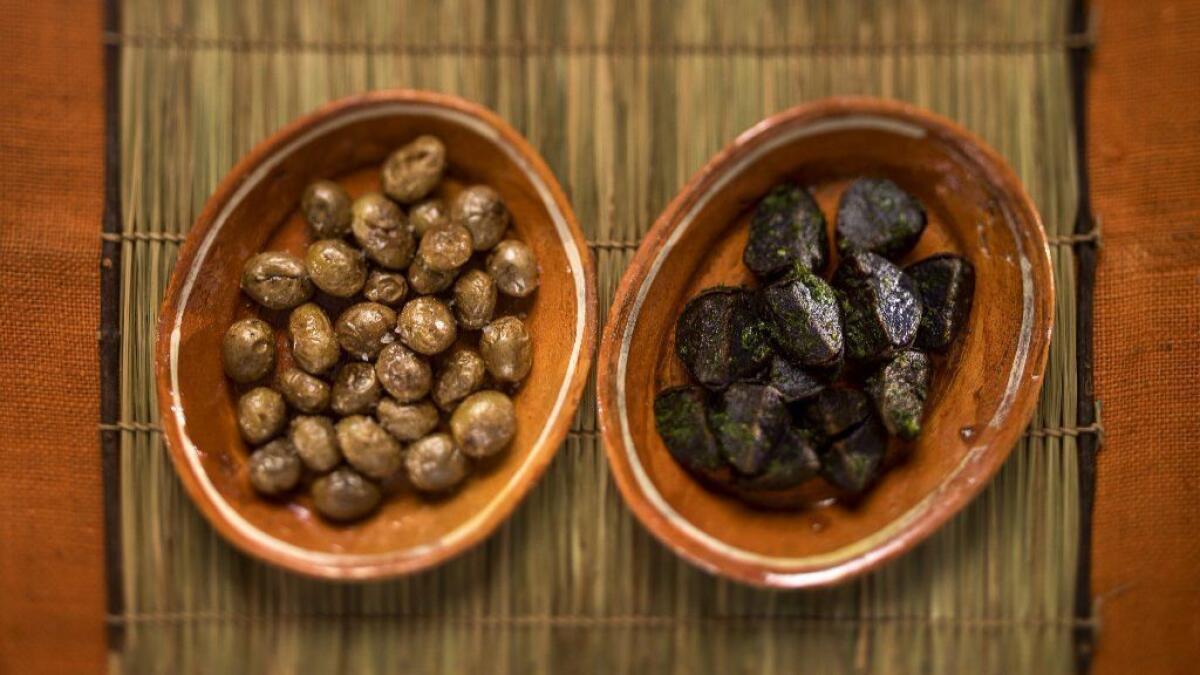Q&A: A world renowned chef on cooking what may be Peru’s most famous food — and it’s probably in your kitchen
- Share via
While he may be one of the world’s most highly regarded chefs, food wasn’t the first passion for Virgilio Martinez. A former national skateboarding champion in his native Peru, Martinez decided to study law after injuries left him unable to compete, and it took a side holiday job for him to fully realize his love for cooking.
After cooking his way around the globe, Martinez returned home to Peru, where he opened his flagship restaurant, Central, in the capital of Lima. Central, included in the World’s 50 Best Restaurants, has been named best restaurant in Latin America for three years. In addition to operating restaurants in London and Dubai, Martinez most recently opened Mil, a restaurant focused on the people and ingredients of Moray, an area in the Andes known for its Incan ruins. Martinez, whose style fuses traditional ingredients with modern techniques, is also behind Mater Iniciativa, a biological and cultural research center identifying and exploring local ingredients and their stories.
Recently we caught up with Martinez via email about his love and passion for the potato, a New World ingredient and possibly Peru’s most famous food. This interview has been edited for length and clarity.
Why is the potato so important to Peruvian cuisine?
The potato has been cultivated for thousands of years, way before the times of the Incas, when varieties and creation were stronger. For the Incas, it was considered a humble product as it grew easily practically everywhere, even on the coast.
There are over 3,000 varieties of potatoes in Peru, and you’ve seen over 400 of them.
More than 4,000 for sure — there has been a registry of 4,200 native varieties of potato alone between Peru and Bolivia. There is still a lot of work to do in registering them and obtaining research funds for special analysis.
Varieties are interesting in that each has something particular in terms of flavor, texture, starch content — as well as the colors of skin and pulp, including orange, purple, marbled, fuchsia and pink. Cooking times and final results also vary, and it’s pretty amazing to taste each of them and find out what makes each unique.

Recipe: Chimichurri with blue potatoes and sauteed new potatoes with Maras salt »
You’ve said that “every single plant has its own spirit or idea or philosophy.”
Potatoes grow deep in the soil, as the storage of a plant. They’re strong and resilient, and beautiful too. When the harvest happens, farmers build an oven with dry compact soil, heated with the fire of the remainings of other harvests (branches of quinoa and amaranth) and potatoes get cooked inside. So people eat the potatoes cooked using the same soil that allowed them to exist. And that is a ritual that connects people with the farmlands in a very close and meaningful way, as everything — from farming to cooking to eating — keeps them closely linked.
You’ve made desserts out of potatoes?
I’m actually surprised at how much we can do with the potato, utilizing the variety of textures, colors and flavors. We make a dessert based on cacao and potatoes fresh from the harvest. We will freeze-dry potatoes and use them as a thickener — we also use the ashes of the skins to add flavors to ice creams and sweet broths.
The potato harvest has just begun in Peru. How long does the season run?
Harvest usually starts every May. Sometimes it begins a bit earlier or later, but it’s celebrated and is definitely intense in May. The harvest lasts about four months, and when you visit the potato-growing regions in Peru, this is the time where you can see storage units traditionally made with ichu [a type of grass], for preserving them.
Do you have any tips for the home cook?
Please be sure to use the skins, but clean them well. Baking them at home in a crust of salt is a great way to cook them, or simply cover the potatoes and steam them.
Tell us about the recipe for chimichurri and two kinds of potatoes, from your first cookbook, “Lima” — why was this one important to you?
They’re both very typical ways of cooking potatoes, and the recipes have a long tradition. We have a restaurant by the town of Maras, and I see a lot of recipes like this — in my dishes, I like to show what I see and find when I visit the farmers and people, as I am always inspired by them.
Get our Cooking newsletter.
Your roundup of inspiring recipes and kitchen tricks.
You may occasionally receive promotional content from the Los Angeles Times.




